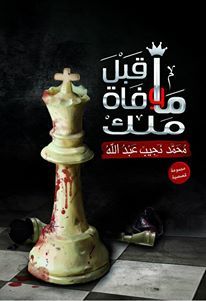
(Handout photo)
By Mohammed Abdel-Monsef and Nada Deyaa’
Changing the lives of the people around one is the most fascinating things any person can do. There is happiness in the street children’s eyes, knowing that they have been provided with a better future just because someone wants a brighter future for this country and can actually have faith in them and their abilities.
The story is about a woman who decided, with the help of other people, to draw a brighter side of Cairo, filled with colours and shining stones with their bare hands. It also helps people walking down the street notice the missing beauty of the country and raises their spirits up.
Soheir Othaman is the Vice Dean of Community Development at Helwan University’s Faculty of Fine Arts. When Othman saw the lack of beauty, cleanliness and the distortion the city is suffering from, she decided to draw on the walls with the help of the students of the faculty.
“The amount of visual pollution of the city was unbearable for me,” Othman said on the main reason of the project. “That negatively affects our personalities leaving us with lack of creativity and emotional relief.”
The project started with a protocol between the Faculty and the Cairo Governor, demanding the first partner to provide several forms and designs of beautifying the city through paintings and art. On the other hand, the government would be responsible for providing the tools and instruments the students would use in applying.
“I was responsible for drawing the designs, yet the students would be the one’s who’d apply them in reality,” Othman said.

(Handout photo)
Making 30 murals on “Rokn Farouk” (Farouk’s corner)at Giza were the first achieved part of the project. The murals were created by small Mosaic stones and sculpture.
“That took us much more effort than the normal paintings, as it needs a lot of focus and efforts,” Othaman remembered.
For three months, the students kept on making the murals with almost no money taken for them. The cost of the project was EGP 100,000; most of which was spent on acquiring the items to create the murals. “What the students took were peanuts of the total amount of money,” she said with a laugh.
The team made sure that the murals represent the historical sides of the place, including using greenish mosaic representing agriculture, the Nile presented by the blue.
“We present the combination of industry, nature and history in every design we do,” Othman added.
Yet afterwards, Othman says the governors showed no indicators of wanting to complete the project.
“They told me in an indirect way that they are not willing to pay the project any more money,” she said. “It was hard for me to financially support such a big project, knowing that in the future it would require more money.”

(Handout photo)
After finishing the project of beautifying the streets of Cairo, Othman wanted to help improve the talents of the street children to make sure they have a brighter future.
Noticing that they spend most of their lives is lost doing nothing, Othman talked with several NGOs responsible for taking care of street children to allow her to teach them some of the basic art work to improve their talents. “Ana El-Masry” (“I’m Egyptian”) was one of the organisations that take the children from street, educate them, and raise their cultural awareness.
In weekly workshops, 20 students are taught drawing, sculpture and pots by the professors of the faculty. The teams are separated due to age range from 6 to 18.
“No one can ever imagine the happiness we [the teachers] see in the eyes of the children once they feel they can do something, and they’re useful to the society,” Othman said. Afterwards, the products are sold through the NGO and the money would be given to the children back.
“Knowing that they can add a value to life by the work they are doing, was one of the best things these children got to know in the workshops” she added. For several years, more than 150 children have learnt how to be creative.
At the end of the day, Othman believes that each of us is born with value to add, and the best value any one can ever add is to change someone else’s life, either by teaching him something or just by letting him see a new, living painting as he’s walking down the street.



